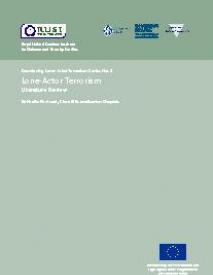Lone-Actor Terrorism : Literature Review
Lone-actor terrorism is not a new phenomenon; however, research suggests the threat is increasing as pressure from security services forces a tactical adaptation and groups call on those who share their ideology to act alone without direction or support. This paper is the first publication in the Countering Lone-Actor Terrorism (CLAT) project, which aims to improve understanding of, and responses to, the phenomenon of (potentially) violent lone actors through analysis of comprehensive data on cases from across Europe.
Despite recent depictions within the media, lone-actor terrorism is not a new phenomenon; however, research suggests the threat is increasing as pressure from security services forces a tactical adaptation and groups – including Daesh (also known as the Islamic State of Iraq and Syria, ISIS) – call on those who share their ideology to act alone without direction or support. This paper examines the current state of knowledge surrounding the phenomenon, assessing the limitations of the literature and identifying where further research should focus to add real value to countering the threat.
Three recommendations are made: first, increased methodological rigour in empirical research; second, focus on process as well as perpetrators; and third, specific examination of the confluence between returning foreign fighters, domestic Daesh supporters, and the lone-actor threat.
19 p | Londen : RUSI Publications
https://rusi.org/sites/default/files/201512_clat_literature_review_0.pdf


